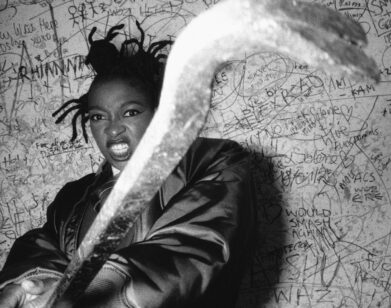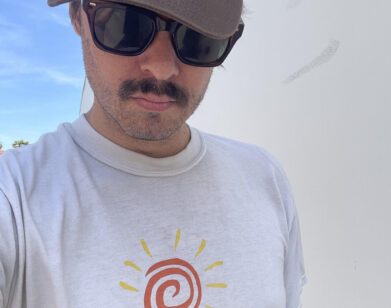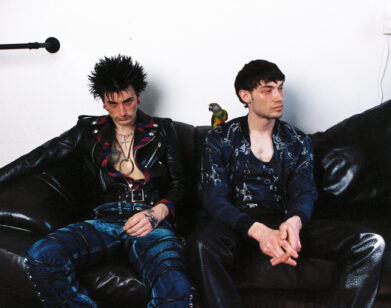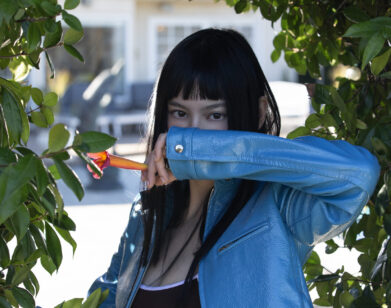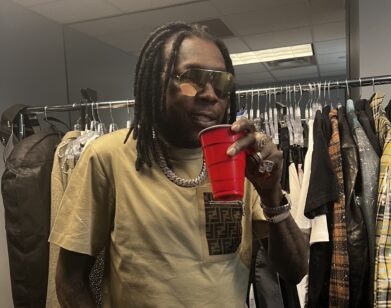New Again: Bob Weir
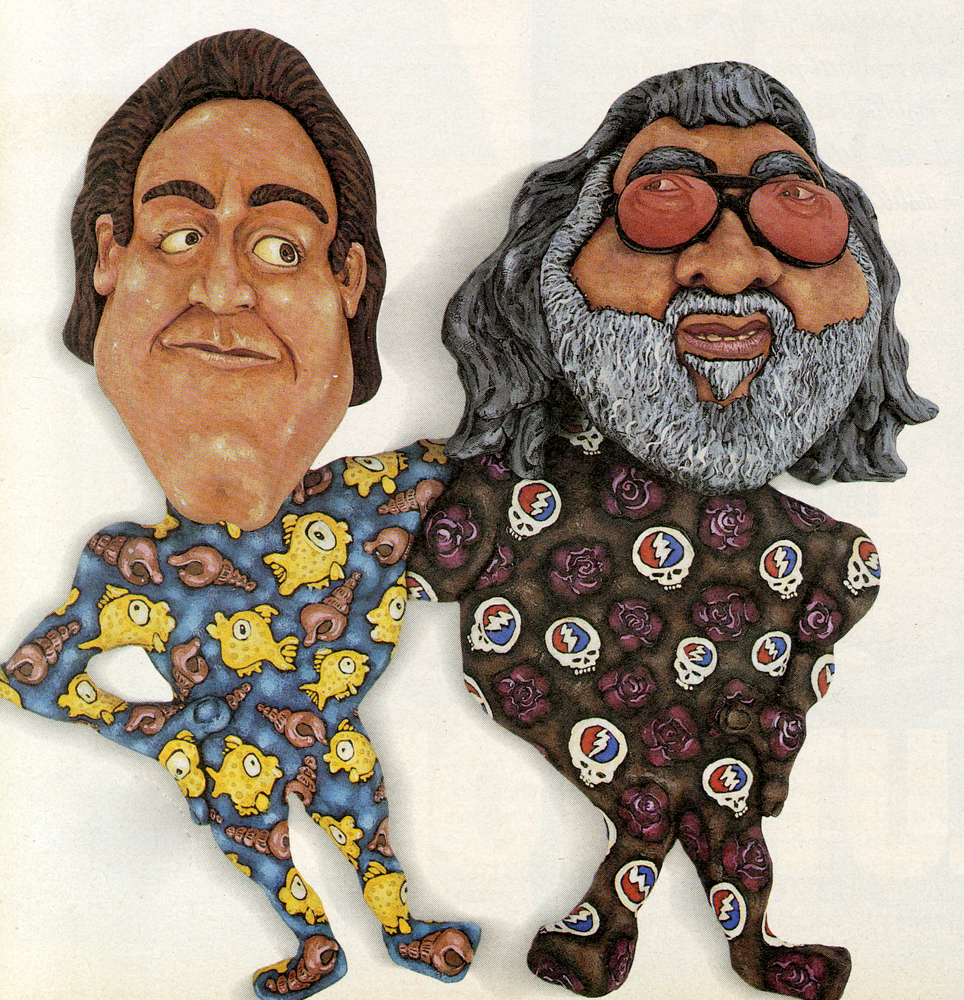
BOB WEIR AND JERRY GARCIA. ILLUSTRATION BY MITCH GREENBLATT FOR INTERVIEW.
This past weekend, the 14th iteration of Bonnaroo Music & Arts Festival took place in Manchester, Tennessee, with a lineup including Pearl Jam, LCD Soundsystem, Tame Impala, Halsey, CHVRCHES, and many more. Although the overall atmosphere echoed that of years past, this year’s festival marked the first annual Les Paul Spirit Award for Innovation and Achievement, and on Sunday, the Les Paul Foundation presented the inagural award to Grateful Dead co-founding member Bob Weir.
In 1994, the Grateful Dead was inducted into the Rock and Roll Hall of Fame and in 2007, the band received a GRAMMY Lifetime Achievement Award. Alongside co-lead vocalist Jerry Garcia, Weir, now 68, penned many of the bands hits, including “The Other One,” “Sugar Magnolia,” “Playing in the Band,” and “Throwing Stones.” More than music, however, Weir wrote children’s books with his sister, Wendy. In June 1995, around the same time as the release of one of these books, Weir reconnected with Garcia to talk about this new kind of authorship for Interview. In light of his recent honor, we decided to revisit this lesser known endeavor and bring you a conversation about writing, fat fruit bats, and dolphins.
Flower Children Power
Question: What’s just come out of the head of one of the heads of the Grateful Dead?
Answer: Jerry Garcia gets the answer from bandmate Bob Weir.
JERRY GARCIA: Mr. Weir, I see that you and your sister, Wendy, have created another in your line of nicely illustrated, nicely packaged kids or, actually, people’s books [Baru Bay, Australia, Hyperion Press]. What is it that compels you to do these things?
BOB WEIR: My sister. I guess she always had a burning ambition to write children’s books, and so she talked me into assisting her, and I’m pretty glad I did. It’s been kind of ritually rewarding in its own peculiar little way, because neither of us have kids, and so we don’t tend to relate to kids as kids, but more as folks.
GARCIA: Right, little people.
WEIR: But both my sister and I still retain a bit of a child’s focus on things, so we figure if we’re going to write books, our best shot is to write children’s books, because we relate pretty readily on that level. That doesn’t really answer your question, but—
GARCIA: I don’t even remember what my question was! [laughs] Okay, the next thing I want to ask you is, why Australia?
WEIR: We wanted to do something on the ocean. First we were thinking of going somewhere where there was a dolphin research program, but there wasn’t any place that we could find where the people were interesting enough. Then we heard about a tribe of Aborigines in Australia who have an arrangement worked out with these dolphin pods, whereby they communicate through clap sticks with dolphins, and they have these joint fishing expeditions where the dolphins will herd a school of fish into a little cove and then keep them there, and the dolphins will feed on one end and the people just reach in and pull the fish out on the other end.
GARCIA: Shit, that’s nice. But I wonder what the dolphins get out of it.
WEIR: I think they may do it for fun, and also, there’s some sort of Dreamtime interaction that goes on between dolphins and people. Basically, in the Aborigines’ point of view, the dream state is reality. That’s where the real stuff occurs.
GARCIA: Yeah, I was just about to mention that there’s some Dreamtime stuff in your book. Also, I was looking hard at this map of Australia in the back of your book—I presume you know what map I’m referring to—but I couldn’t find the place you’re writing about on the map.
WEIR: Well, it’s a make-believe place. We never did find those dolphin folks, but we found some other Aboriginal folks nearby and fell in with them.
GARCIA: I’m wondering about the girl [Tamara] in the story. Now, this is extremely not cool. First of all, her mom sends her off to play by herself in the part of Australia that has, what, the highest concentration of poisonous snakes in the world? [Weir laughs] She’s just a little hippie, and she’s sent off into the rain forest all by herself, where there are insects big enough to hear your head! So that’s my main complaint about the story. On the other hand, it’s the best-produced music [on the cassette that accompanies the book] of any of these things I’ve heard yet. It really sounds cool.
WEIR: We had a ball when we were over there recording all the atmospherics, all the ambience, going into the jungle and sitting down at sunrise and sunset, because the jungle goes nuts at sunrise and sunset. It gets pretty loud in there. The bugs go off, the birds go off, and stuff runs around. So the story more or less came together while we were over there recording sounds. The fruit bats were good—they sound demonic, but they’re actually wonderful. We ran across this one guy who has three pet fruit bats. They’re about a foot long, and the wingspread can be up to six feet, and they’re bats! But they can be cuddly, affectionate pets, too. You scratch them on their belly, and their eyes get all glassy. [Garcia laughs] They crawl around on you, and they like to play and frisk and stuff like that. You know, this guy would be anywhere in his house, and he just whistles for ’em, and whewp, whewp, whewp!
GARCIA: That’s great! I’d like to see that—a fruit bat with a newspaper in his mouth. [laughs]
WEIR: They’re big enough to carry a newspaper. I fell in love with one of them, named Sue, because she was too fat to fly.
GARCIA: The bat was too fat to fly! I guess it’s not good to be a special bat, huh? So, Bob, are there many children’s books in your future?
WEIR: Well, I rather hope so. This is number two of a series. We’re planning to go to interesting places and check out interesting stuff.
GARCIA: Have you got an idea for the next one?
WEIR: We’ve got our best guys on it.
THIS INTERVIEW ORIGINALLY RAN IN THE JUNE 1995 ISSUE OF INTERVIEW.
New Again runs on Wednesdays. For more, click here.

